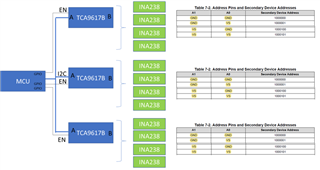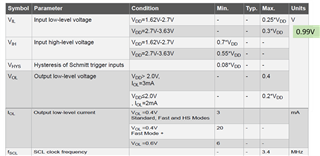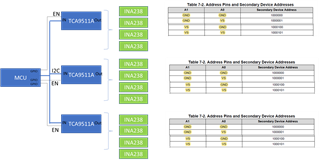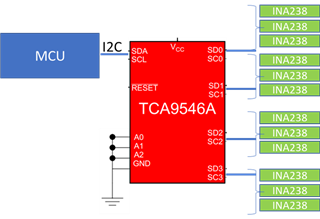Other Parts Discussed in Thread: INA238, , TCA9517, TCA9509, SN74LV4052A, TCA9546A, TCA9511A
Hi,
We need to interface twelve numbers of INA238 to MCU. Scheme selected is using TCA9617B (Four INA238 ICs as a channel, with same slave address). One TCA9617B will be enabled at a time. Can you please check the below scheme and share your feedback?

Regards,
Sneha








